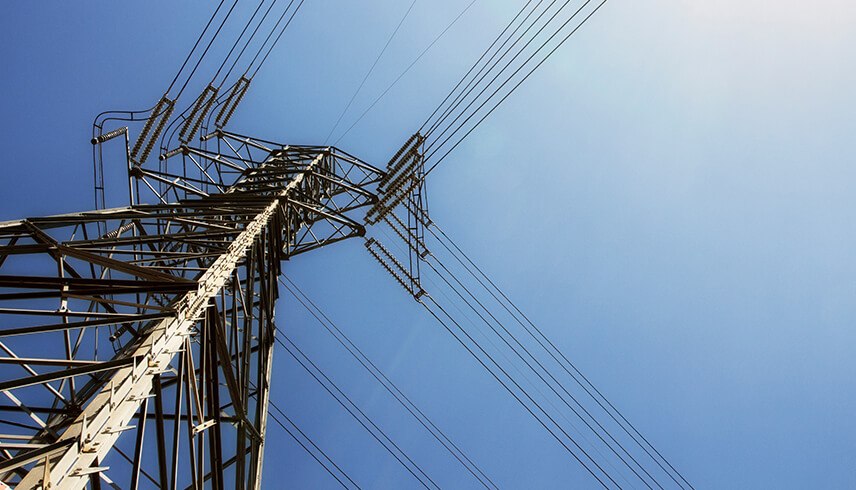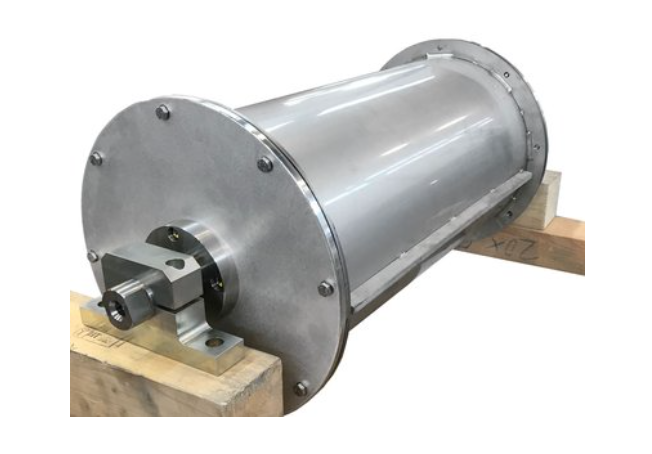
Power transmission and distribution.
Electric Transmission System
At the heart of the transmission system are the generators that produce electricity transmitted through the grid. These generators may be located in power plants, wind farms, or solar energy facilities.
The electricity produced by the generators is typically sent to a step-up transformer, which increases the voltage to a level suitable for long-distance transmission. High voltage is crucial as it allows electricity to be transmitted more efficiently over long distances, thereby minimizing energy losses.

Once the voltage is increased, the electricity is sent to a substation, which is a facility containing various equipment, including cells, circuit breakers, and other devices used to control the flow of electricity through the grid. From the substation, the electricity is transmitted over transmission lines, which are typically large towers or poles designed to carry high-voltage electricity over long distances.
Throughout the transmission system, various monitoring and control systems are employed to ensure the safe and efficient transmission of electricity. These systems can detect issues such as power fluctuations or voltage drops and take corrective actions to prevent damage to the grid or interruptions in the flow of electricity.
Components of the Electric Transmission System
The electric transmission system is a complex network of components working together to transmit high-voltage electricity over long distances. Some of the key components of the transmission system include:
Generators
Devices that convert mechanical energy into electrical energy. Generators are typically found in power plants and use various fuels, such as coal, natural gas, or nuclear energy, to produce electricity.
Transformers
Transformers are used to increase or decrease the voltage of transmitted electricity. In the transmission system, step-up transformers are employed to elevate the voltage to a level suitable for long-distance transmission. When the electricity reaches its destination, step-down transformers are used to reduce the voltage to a level appropriate for distribution to homes and businesses.

Substations
A substation is a facility that includes various equipment such as switches, circuit breakers, and other devices used to control the flow of electricity through the grid. Substations are typically located near power plants or other major sources of electricity.

Substations
Transmission Lines
Transmission lines are large towers or poles that carry high-voltage electricity over long distances. They are typically constructed with conductors made of aluminum or copper and are insulated to prevent contact with other objects.

Monitoring and Control Systems
Various monitoring and control systems are employed across the transmission system to ensure the safe and efficient delivery of electricity. An example of such a system is SCADA networks. These systems can detect issues such as power fluctuations or voltage drops and take corrective actions to prevent damage to the grid or interruptions in the flow of electricity.

SCADA Monitor
Role of the Transmission System in Grid Stability
The transmission system plays a crucial role in maintaining grid stability within a power system. Grid stability refers to the system's ability to provide a steady and reliable source of electricity even amidst disturbances or changes in power demand.
Here are some ways the transmission system helps maintain grid stability:
Balancing Power Supply and Demand
The transmission system is responsible for transporting electricity from power producers to consumers. By carefully balancing electricity supply with demand, the transmission system helps maintain a stable grid.
Reactive Power Control
Reactive power is necessary to maintain voltage levels within the grid. The transmission system manages reactive power flows to ensure that voltage remains stable.
Frequency Control
The transmission system is responsible for maintaining the grid's frequency. By carefully balancing power supply and demand, the system can keep the frequency within acceptable ranges.
Fault Detection and Isolation
The transmission system is equipped with protective relays that detect faults such as short circuits or equipment failures and isolate them to prevent the issue from spreading to other parts of the grid. This helps minimize the impact of outages and supports overall grid stability.

Protective Relay
Capacity Management
The transmission system is responsible for managing the capacity of the grid. It monitors power flows carefully to identify potential capacity constraints and takes measures to prevent these constraints from causing instability.
Overall, the transmission system is critical for maintaining a stable and reliable electrical grid. By carefully managing the flow of electricity and responding to potential issues, the system helps ensure that consumers have continuous access to a reliable power supply.
Electric Distribution System
The electric distribution system is a network consisting of electrical lines, transformers, substation facilities, and other equipment that delivers electricity from power plants to homes and businesses.
Components of the Electric Distribution System
Substations
Facilities that convert high-voltage electricity from the transmission network into low-voltage electricity suitable for distribution to homes and businesses. Substations also include equipment for voltage regulation and power flow control.

Transformer
Transformers are devices that alter the voltage of electricity. They are used to reduce the high voltage from transmission lines to lower voltage levels suitable for use in homes and businesses. Transformers can be installed in substations, on utility poles, or placed on the ground.

Distribution Lines
Distribution lines are overhead or underground cables that carry electricity from substations and transformers to homes and businesses. They vary in size, ranging from large transmission lines to smaller service drops.
Service Drops
Service drops are the cables that extend from utility poles or underground lines to the customer’s meter and then to the premises. These can be overhead or underground and typically represent the final stage of the distribution system.

Underground Easement for Power Transmission
Protection Relays
Protection relays are devices that detect faults or abnormal conditions within the distribution system and initiate protective actions to prevent equipment damage or personal injury. They play a crucial role in ensuring the safety and reliability of the electrical network by quickly identifying issues and activating mechanisms to isolate and address the problem.

Protection Relays
Communication Modules
Communication modules are devices that enable communication between various components of the distribution system, such as substations, transformers, and control centers. They are used to monitor the system's status, control power flows, and detect and respond to faults. By facilitating real-time data exchange, communication modules help ensure the efficient and reliable operation of the electrical distribution network.

RTU Module
Capacitors
Capacitors are devices used to store electrical energy and regulate voltage levels. They improve power quality by stabilizing voltage and filtering out unwanted fluctuations.
Switches
Switches are devices used to open or close sections of the distribution system. They allow for the rerouting of power around faults or facilitate maintenance work by isolating parts of the system.
Circuit Breakers
Circuit breakers are devices that automatically interrupt the flow of electricity in the event of a fault or overload. They help prevent damage to equipment and protect against electrical hazards by quickly disconnecting the affected circuit.

SF6 Gas Insulated Circuit Breaker
Meters
Meters are devices that measure the amount of electricity used by customers. They provide data for billing purposes and system planning.
Overall, these components work together to ensure the safe and reliable distribution of electricity to customers. Many pieces of equipment and components used in transmission and distribution may have similar or even identical features.
Importance of Voltage Regulation in the Distribution System
Voltage regulation is a crucial aspect of electrical distribution systems as it ensures that the voltage supplied to homes and businesses remains within acceptable limits. Proper voltage regulation prevents potential issues that can arise from both too low and too high voltage levels. The key reasons for the importance of voltage regulation in the distribution system include:
-
Protects Equipment: Many types of electrical equipment are designed to operate within specific voltage ranges. Voltages outside this range can cause equipment malfunctions or premature failure. Voltage regulation helps maintain voltage within acceptable limits, thereby protecting equipment from damage.
-
Maintains Power Quality: Voltage fluctuations can lead to problems such as flickering lights, computer crashes, and other issues that affect the quality of power supplied to customers. Voltage regulation helps maintain a stable voltage level, improving power quality and reducing the risk of such issues.
-
Ensures Safety: High voltage levels can pose safety hazards, particularly if people or animals come into contact with electrical equipment. Voltage regulation helps keep voltage levels within safe limits, reducing the risk of accidents and injuries.
-
Enhances Efficiency: When voltage levels are too high, electrical equipment may consume more energy than actually needed. This can lead to higher energy bills and unnecessary load on the distribution system. By regulating voltage levels, system operators can improve the efficiency of the distribution system and reduce energy waste.
Overall, voltage regulation is a critical function of electrical distribution systems that helps ensure the safe, reliable, and efficient delivery of electricity to homes and businesses.
